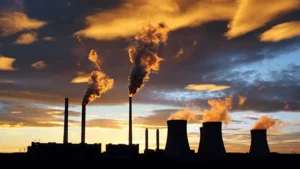National Electricity Market data to the end of February 2016 show a continuation of trends reported over the last few months: strong demand growth in Queensland driven by electricity use to drive pumps and compressors supporting the growth in coal seam gas production, and little if any growth in other states.
At this time of year month on month changes in demand are particularly affected by the occurrence, or otherwise, of heat waves. That was the case in NSW, where a heatwave during the last week of February caused total annualised demand to tick up.
Demand in Tasmania was flat, which is consistent with the fact that to date the government has responded to the supply crisis described in the last CEDEX Electricity Update by using supply side measures only.
These have included operating the state’s two gas‐fired generators continuously at full capacity and, more recently, bringing in a large number of containerised diesel generation sets. Media reports indicate that discussions have been held with the handful of large industrial users, which consume more than half the state’s total electricity consumption, about partial curtailment of operation.
To date, unlike responses in other countries faced with similar emergencies, no effort has been made to encourage household and smaller business consumers to increase the efficiency with which they use electricity.

On the NEM supply side, the strong growth in black coal generation, and off‐setting fall in brown coal generation continued . Hydro generation increased with higher output from Snowy Hydro to both NSW and Victoria. Failure of Basslink meant that a much needed reduction in hydro output in Tasmania was not possible; hydro generation was almost unchanged on an annualised basis. Gas generation continued to decline in all states except Tasmania (where in a national context it is very small). Wind generation was essentially unchanged.
The total share of coal generation in the year to February 2016 was 76.0 per cent, a level which has scarcely changed over the past four months. The renewable share continued to grow slowly, reaching 13.1%.
In historic terms, this is a high value, exceeded only during the carbon price years, when the total was strongly influenced by the short term increase in hydro generation. The current level reflects the steady growth, until recently, of wind generation. With no new windfarms due to come on line for a year or so, it is likely that the renewable share will fall, and emissions rise, once Basslink is repaired and Hydro Tasmania is able to wind back its output.


Total emissions from electricity generation in the year to February 2016 showed a slight uptick from the relatively slow growth seen over the past few months. This matched the small uptick in demand seen in NSW and Queensland. The total was the highest since the year to February 2013, i.e. the highest for three years.
Hugh Saddler is a senior analyst for Pitt & Sherry.







